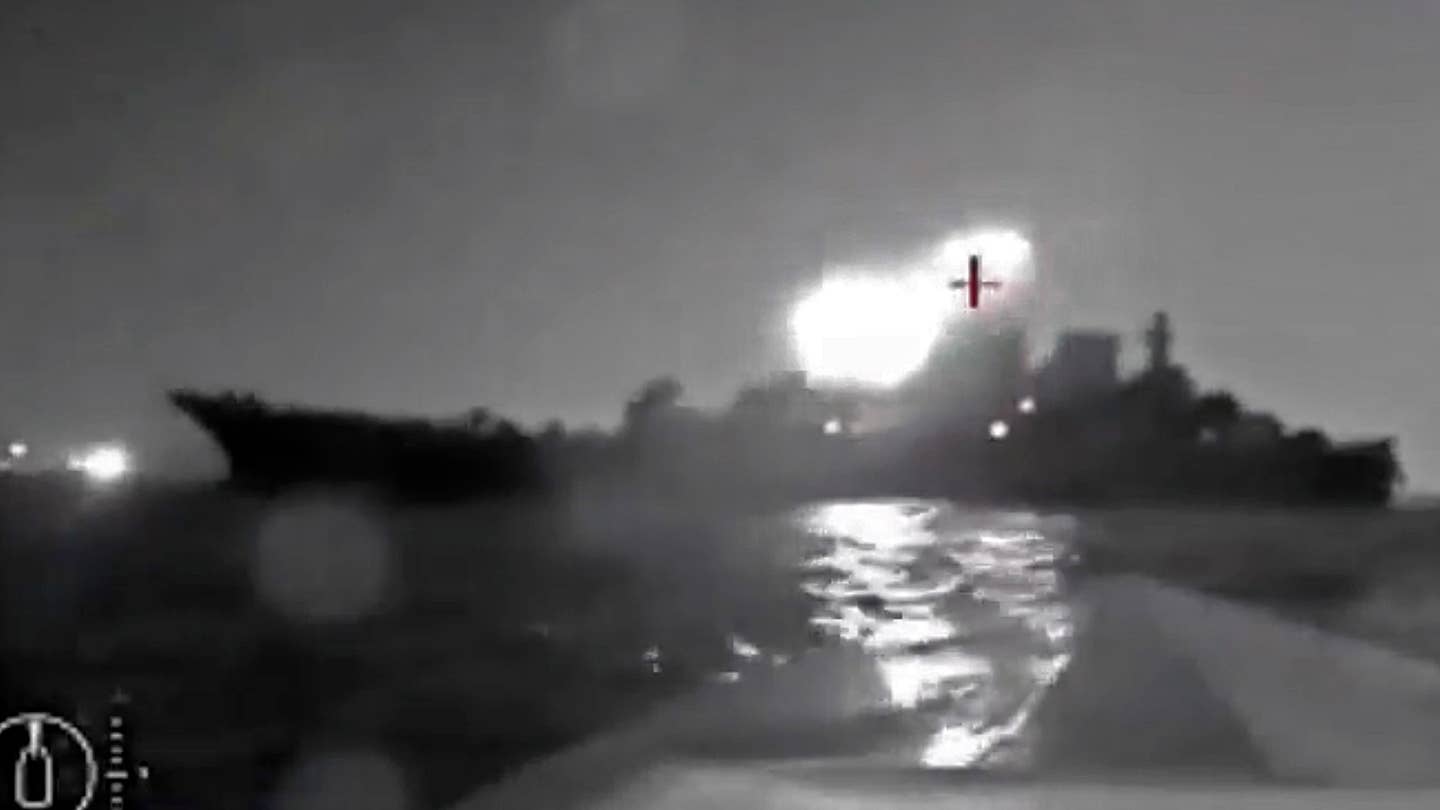The recent use of Ukrainian naval drones to target Russian ships demonstrates the increasing importance of unmanned surface vessels (USVs) in modern naval conflicts.
According to the UK Defense Ministry, the attacks illustrate that the utilization of USVs is progressively becoming a significant aspect of contemporary naval warfare, capable of being directed at “the weakest links of Russia’s sea supply lanes.”
On August 4, the Russian Merchant Tanker Sig was targeted and rendered inoperable by a suicide naval drone. A separate incident occurred on August 2, wherein an attempted attack on Russian patrol boats, likely accompanying the merchant vessel Sparta IV, was thwarted.
The UK Defense Ministry further alleged that despite their civilian flags, the MT Sig and MV Sparta IV had been consistently contracted to transport fuel and military resources between Russia and Syria.
The ministry highlighted that since February 28, 2022, Russian military ships had encountered restrictions in traversing the Bosphorus.
Latest Defence Intelligence update on the situation in Ukraine – 09 August 2023.
Find out more about Defence Intelligence's use of language: https://t.co/IogZ2lVJHB
🇺🇦 #StandWithUkraine 🇺🇦 pic.twitter.com/JKYwx1myAX
— Ministry of Defence 🇬🇧 (@DefenceHQ) August 9, 2023
This has resulted in a heightened reliance on civilian vessels like Sig, Sparta IV, and a limited number of others to sustain Russian military operations in Syria and the broader Mediterranean region.
Furthermore, it is reported that the Olenegorsky Gornyak, a Ropucha-class landing ship, sustained substantial damage from a drone attack by Ukrainian forces on August 3.
The ship had been regularly reassigned from its original position within the Russian Northern Fleet to facilitate the transportation of both military and civilian cargo between Russia and the Crimean peninsula, particularly during instances of disruption to the Kerch Strait Bridge.
The attack on the Olenegorsky Gornyak occurred close to the Novorossiysk base of the Black Sea Fleet. This base has been designated as a relocation site for numerous vessels, including crucial landing ships, following prior assaults on the Sevastopol naval base in November.

Overall, the series of attacks serve as a compelling testament to the burgeoning prominence of uncrewed surface vessel (USV) operations within the dynamic realm of modern naval warfare.
This trend vividly highlights the paradigm shift toward integrating advanced autonomous technologies into the maritime domain.
Changing The Rules Of The Game
Throughout the ongoing conflict, Ukraine has embarked upon a strategy aimed at incapacitating Russian vessels through the utilization of ‘kamikaze’ uncrewed surface vehicles (USVs), ingeniously equipped with explosive payloads.
These USVs are navigated over considerable distances before being deliberately directed into their intended targets to trigger a devastating detonation upon impact.
The remote operation of these USVs is believed to be facilitated through a satellite link, which has undergone refinements to enhance its operational range.
While numerous instances of these attacks have been documented, the veracity of the outcomes has remained a subject of contention and has been challenging to corroborate.
A key occurrence involving USVs occurred on October 29, 2022. During this incident, Ukraine deployed naval drones to attack Russian warships located in the port of Sevastopol, which serves as the base for Russia’s Black Sea Fleet.
While the attack did not result in vessels sinking, its impact was profound. Moscow was prompted to enhance its defensive capabilities in Crimean ports, and it also deterred them from sending warships out of the protective umbrella provided by the port’s defenses.
That being said, the capabilities of these USVs also furnished Ukraine with an effective strategy to curtail the maneuverability of the Russian Navy. Mykhailo Podolyak, an adviser to the Ukrainian president, lauded these strikes in a recent tweet.
He remarked, “What is happening in the Black Sea? #Drones are changing the rules of the game, returning the waters to a full-fledged foreign jurisdiction, and ultimately destroying the value of the Russian fleet. They are returning everyone to the international law of the sea.”
Dr. James Bosbotinis, a UK-based defense and international affairs analyst, shared insights with EurAsian Times on the challenges associated with detecting unmanned surface vessels (USVs) and potential countermeasures to tackle these challenges.
He emphasized the intricate challenge of detecting Unmanned Surface Vehicles (USVs) due to their “small size, low signature, and mode of operation.”
He added, “Ideally, a multilayered defensive approach would be employed, seeking to detect, track and target the USVs at range, to attempt multiple attacks, for example, employing armed-helicopters or UAVs as an outer layer, with both kinetic (guns, missiles), and non-kinetic (such as electronic warfare, directed energy systems) systems to target the drones.”
“Passive defenses, such as floating booms (which Russia has installed at Sevastopol), can also be employed. USVs themselves can also provide a counter-USV capability (the Rafael Protector, for example),” Bosbotinis noted.
Meanwhile, the Ukrainian military has been actively pursuing the development of a fleet consisting of 100 naval drones to safeguard the waters of their seas.
These drones are envisioned to serve several functions, including thwarting Russian ships carrying missiles from exiting bays, ensuring the protection of merchant vessels, and executing covert missions, according to the Ukrainian government’s crowdfunding platform, United24.
Reportedly, these drones possess an operational range of 800 kilometers and can reach speeds of 80 kilometers per hour. These boats, measuring 5.5 meters in length, can operate for up to 60 hours and carry up to 200 kilograms of explosives.
United24 elaborated on the versatility of these drones, stating that they can engage in extensive maritime reconnaissance and coastal surveillance, accompany and support conventional naval fleets, provide escort services for merchant ships, aid in targeting artillery fire, secure military bases, and counteract amphibious operations.
- Contact the author at ashishmichel(at)gmail.com
- Follow EurAsian Times on Google News